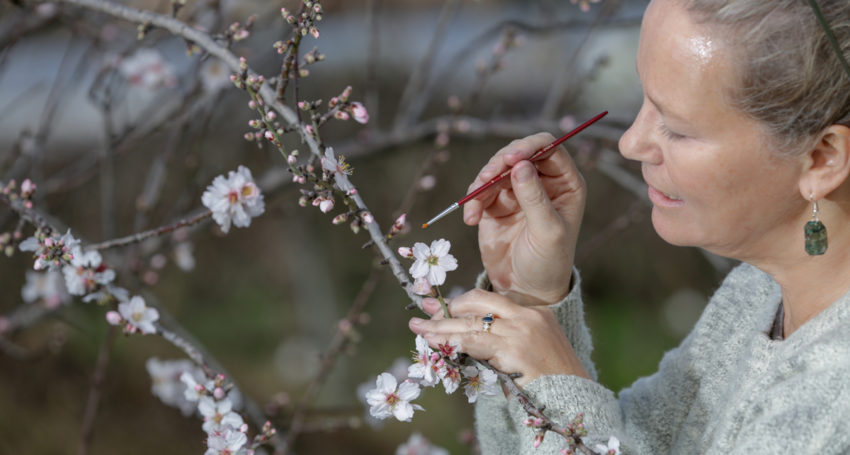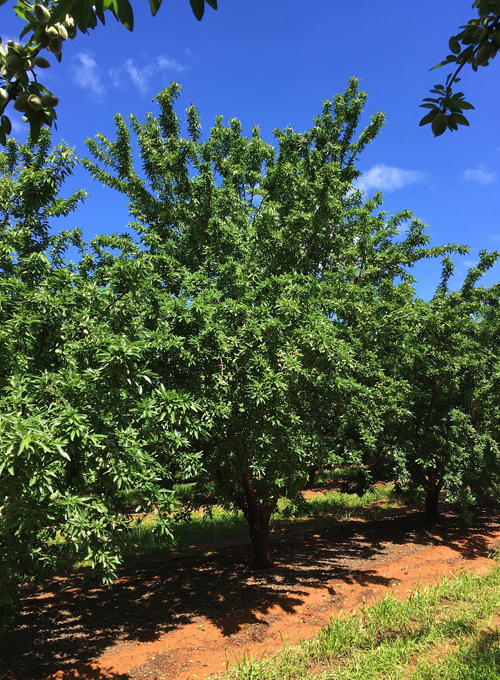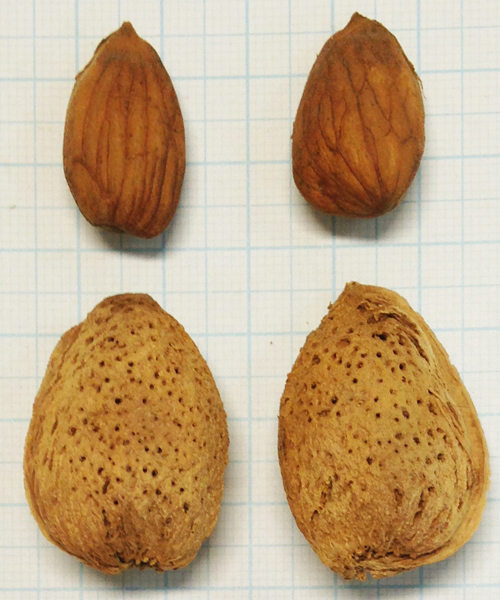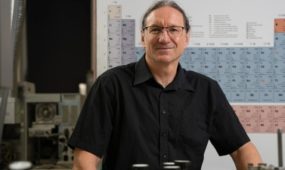New Australian varieties help fuel global almond boom
Education
Australian-bred almond varieties are set to make their mark across the globe as growers look for ways to combat declining bee colonies.

Sign up to receive notifications about new stories in this category.
Thank you for subscribing to story notifications.

Six new varieties developed at the University of Adelaide in South Australia have been released in Australia in the past two years, four of which are self-fertilising.
Budwood cuttings have been sent to California.
The United States is the dominant almond producing nation, growing about 80 per cent of the world’s almonds followed by Australia, Spain, Iran and Italy.
However, concerns about declining bee colonies, particularly in the US, have nurseries looking to new varieties – including those bred in South Australia – that do not require bees for pollination.
The decline in bee numbers in recent years has been blamed on a variety of factors including pesticides, climate change and parasites.
This has coincided with a rise in global almond consumption and increased plantings that led to record production of 1.3 million tonnes in 2017/18.

A Vela tree in a trial orchard in South Australia.
The University of Adelaide has run the National Breeding Program for two decades, leading to the commercial release in Australia of five new varieties of almond trees in 2016 and a sixth in 2017.
Cuttings of all six were sent to the United States in August 2016 where they will remain in quarantine until November.
Some of them will go into USDA trials along with trees from other parts of the world.
Program Leader of the National Almond Breeding Program Dr Michelle Wirthensohn received an Australian Government grant last month. This has allowed the University of Adelaide to partner with Californian company Varieties International, which will send the trial varieties to Yuba City nursery Sierra Gold.
“They’re a large nursery and they are very keen to trial our self-fertile varieties because they don’t have anything on their books that is self-fertile,” Dr Wirthensohn said .
“It’s a fairly new thing, there’s a few varieties out … Sierra Gold has told me they will test for 10 years before they release them commercially.”
Three of the varieties – Carina, Mira and Maxima – have semi-hard shells while Vela is a soft shell, Rhea a paper shell and Capella is a hard shell. Maxima and Rhea are not self-fertilising but Maxima is proving popular among some Australian growers because of its large kernel.

The soft-shell almond variety Vela.
Nonpareil, also known as Californian Paper Shell, is the main commercial variety in the world.
Dr Wirthensohn said a key factor with the new Australian varieties was their similarities in kernel properties to Nonpareil.
She said all of the varieties out-yielded Nonpareil in Australia by more than 10 per cent, producing more almonds per tree with the same amount of water.
“So if the time came when for some reason Nonpareil collapsed then we would have an almond that looked really similar and was either the same size or bigger,” Dr Wirthensohn said.
“The main attraction is the self-fertilising and I guess in the United States they are also curious to see how our almonds are going to perform over there – they’ll probably perform differently but hopefully they will do at least as well as they do here.”
The University of Adelaide’s almond breeding program is funded by Hort Innovation, with almond industry levy funds.
It can take decades to breed a new almond cultivar from the initial crossbreeding through to commercial release.
Dr Wirthensohn said the next pipeline of trees in the Australian breeding program were currently going through secondary and tertiary evaluation with a projected commercial release of another five varieties – some self-fertile and some not – by 2023.
“The next lot of breeding that I’ll be beginning next year I’m only going to focus on self-fertile varieties because that’s what the industry says it is aiming for – self-fertilising trees that minimize the need for bees and filling up the orchard with a variety that doesn’t need a pollinator,” she said.
“The lack of bees will be a concern in the future.
“No one has trialed a solid block of self-fertile trees in Australia yet – they have in Spain and they said it worked fine – but no one’s tried it here yet, which will be interesting.”
Dr Wirthensohn said the Almond Board of Australia was also trialing high and medium density plantings at the Almond Centre of Excellence Orchard in South Australia’s Riverland, one of Australia’s main almond, grape and citrus growing areas.
The medium density trial was planted in 2017 at 3-metre spacing between trees with 6.5 m between rows and using Nonpareil, Carina, Maxima and Vela. The high-density plantings will go in this year at 1-metre and 2-metre spacings.
More than $A400 million of Australian almonds are exported to 46 countries every year with Europe and India the biggest markets.
Jump to next article




